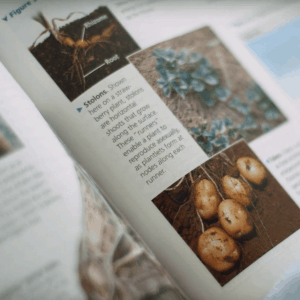
Helping students retain information
12/19/2020

This is the second installment in a series of pieces from Leading Educators and the Learning Agency about opportunities to use strategies from the science of learning in diverse contexts to boost students’ learning. There are often barriers to bringing research back to the classroom where it can benefit students most, so this series shares learnings from collaborating with real educators to make the science of learning work for them and the students they serve.
SPACING GIVES STUDENTS MULTIPLE OPPORTUNITIES TO RETRIEVE INFORMATION TO STALL FORGETTING
Students live increasingly busy lives, and as teachers, it can feel like a constant struggle to get them to remember what they have learned. Sometimes students will ace a test or assignment, and then weeks or months later, they have no recollection of the information. Teachers Bill Hinkley and Heather Webster of Medomak Valley High School know that challenge well in their town where a Maine snowstorm can easily throw learning off course.
“You know, as a teacher, you get kind of down on yourself. You’re like, ‘Why, why are they not getting this? Why are they not remembering?’” shares Mr. Hinkley. The strategy of spacing can be a powerful solution.
Dr. Yana Weinstein-Jones explains, “The idea of spacing is coming back to information that was learned previously in order to refresh it …Spacing enables additional opportunities to retrieve or remember that information so that the knowledge then gets boosted instead of just completely deteriorating.”
This is critical to stopping the natural forgetting process. “So what tends to happen as soon as information is learned, if you imagine that you have it at 100 percent accuracy…very quickly, almost immediately, you’re going to forget a lot of it. So now, if I’ve asked you maybe a few days later, you have forgotten maybe 50 percent of it. And then, it kind of plateaus,” shares Dr. Weinstein-Jones.
At Medomak Valley High School, she met with Mr. Hinkley and Ms. Webster to reflect on their experiences with students and talk about ways to incorporate spacing into their teaching. Both teachers shared feelings of relief.
The idea of spacing is especially important when considering the way rigorous college and career readiness standards require students to keep building and using grade-level conceptual knowledge. If they forget something in math like counting, that will come up over and over again, they could struggle with more complicated objectives later on. If teachers anticipate concepts that need to need to periodically practiced, students will be more likely to hold onto key skills.
Mr. Hinkley started to review skills at the start of each class. Holding a few minutes every day for students to individually recall what they learned in a previous lesson brings that information front of mind before jumping into new information. Researchers also recommend homework or frequent quizzes as places to reinforce concepts over time.
Ms. Webster shares, “This really is about what we want these students to walk out of here with. It doesn’t become automatic in one year of high school, and it probably doesn’t become automatic in four years of high school. But we’re all like that..I would need a reminder.”






